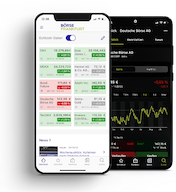Gold market report: “A golden year”

Blumenroth reports this week that gold prices have moved sideways over the past three weeks and are trading around five percent below their record high. With the Fed raising its inflation forecasts and the new US administration about to take office, the situation on the market remains exciting.
19 December 2024. FRANKFURT (Xetra-Gold). Gold prices have tended to move sideways over the past three weeks, trading around five percent below the record high of US$ 2,790 per ounce. However, after the steep rally since the beginning of March, this may well be a necessary break to recover. We runners know that regeneration is sometimes underestimated and neglected.
After all, gold prices have risen by 27% in US dollar terms since the beginning of the year and by as much as 34% in euro terms - outperforming many other investments.
What will happen after the change of power in Washington?
The wait-and-see attitude of the last few weeks may well make sense: we are in the transition phase to the new US administration, which will take office on January 20, and it is really quite uncertain how it will actually act, especially with regard to customs and trade policy and what the consequences will be for the global economy.
Fed dampens expectations of interest rate cuts
The US Federal Reserve also sent gold prices on a temporary downward spiral. The Fed has raised its inflation forecasts for the next two years and now does not expect a return to the target level of 2.0% until 2027. The monetary authorities see risks to the inflation outlook primarily on the upper side. The new projections therefore show that the central bankers are expecting fewer interest rate cuts next year, namely only two interest rate cuts of 25 basis points each in 2025. In September, the monetary authorities were still forecasting four interest rate cuts for next year.
Equities and gold prices under pressure in the short term
The Fed's statement also hinted at a slower pace of rate cuts, saying that “the extent and timing” of additional adjustments would depend on the outlook. The financial markets reacted strongly to the Fed's decisions. The US dollar received a significant tailwind. US government bonds, whose yields rose significantly, share prices and the price of gold, on the other hand, came under heavy pressure. After all, gold pays neither interest nor dividends and a firm US dollar makes gold more expensive outside the USA.
However, this price dip could be ironed out again in the medium term. Both the demand from Asian investors, which has been particularly strong in India and China this year, and the continued buying interest of central banks suggest that gold prices should also have upward potential in 2025, although price increases on the scale of this year are rather unlikely.
On Wednesday evening three weeks ago, gold was still trading at US$ 2,640 per ounce. After a setback to 2,614 at the beginning of December, the high for the month so far was traded at 2,726 on December 12. However, the precious metal subsequently gave back its gains - profit-taking by large investors probably played a role here. It fell back to 2,633 on Tuesday of this week and even to 2,584 yesterday following the Fed meeting. This morning it is trading slightly higher at US$ 2,610 per ounce.
Slight recovery for Xetra-Gold after significant setback
Until yesterday afternoon, the Xetra-Gold price also traded little changed compared to Wednesday three weeks ago. During normal trading hours, it initially climbed from €80.30 per gram to €83.25 on December 11. Here too, however, prices subsequently came under pressure: the Xetra-Gold price fell to €80.55 on Tuesday and recovered to €80.85 per gram in very volatile trading this morning due to the weakness of the euro.
The markets now have to digest the messages from the US Federal Reserve. The high US yields and the strength of the US dollar could blow further headwinds into the face of gold prices in the short term. However, in the medium term - see above - the continued strong demand from central banks and Asia should support prices and open up upside potential.
From Michael Blumenroth, 19 December 2024, © Deutsche Börse





